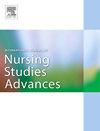重症监护病房获得性弱点的潜在诊断工具:系统综述
IF 3.1
Q1 NURSING
International Journal of Nursing Studies Advances
Pub Date : 2025-01-27
DOI:10.1016/j.ijnsa.2025.100301
引用次数: 0
摘要
重症监护病房获得性虚弱是危重患者的常见并发症,与死亡率升高、机械通气和住院时间延长、活动能力下降和预后不良有关。早期诊断重症监护病房获得性弱点并确定其子类对于早期实施有针对性的干预措施和护理战略至关重要。然而,对于重症监护病房获得性虚弱,广泛接受的、准确的、用户友好的诊断工具的可用性仍然存在重大差距。目的对危重患者重症监护病房获得性乏力诊断工具的相关研究进行综述,总结其诊断效果及局限性,以帮助医护人员选择合适的重症监护病房获得性乏力诊断工具。方法采用系统评价和meta分析首选报告项目(PRISMA)声明指导文献检索、偏倚风险评估和数据提取。检索数据库包括PubMed、Web of Science、EMBASE、Cochrane Library和CINAHL。检索期为数据库建立至2024年7月1日。不同类型的研究使用了不同类型的风险偏倚评估工具。由于数据的异质性,本研究仅对重症监护病房获得性虚弱诊断工具进行了叙述综合。结果本研究共纳入38项观察性研究。在纳入的研究中,重症监护病房获得性虚弱诊断的金标准包括医学研究委员会评分、肌肉活检和电生理测试,潜在的诊断工具包括手动肌肉测试、电生理测试、成像、血清炎症标志物、神经肌肉超声和其他参数。在各种研究中,重症监护病房获得性弱点诊断工具的诊断准确性一直不一致,每种工具都有自己的一套优缺点。目前,没有单一的工具可用于重症监护病房获得性虚弱的明确诊断,需要多种方法的联合使用,每种方法都有其固有的局限性。手工肌肉测试价格低廉,操作简单,但需要患者有意识和配合。肌肉活检是侵入性的,很少使用。电生理测试可以帮助区分重症监护病房获得性虚弱是由神经还是肌肉改变引起的,从而有助于对其亚型进行分类。然而,它是中度侵入性的,昂贵的,并且依赖于操作者。其他诊断方式,如成像和呼吸参数,正在进行调查。结论重症监护病房获得性虚弱的诊断工具多种多样,各有优缺点。本研究总结了目前关于重症监护病房获得性虚弱的潜在诊断工具的证据,并确定了这些诊断工具未来可能的发展方向。普洛斯彼罗注册号CRD42024573139。本文章由计算机程序翻译,如有差异,请以英文原文为准。
Potential diagnostic tools for intensive care unit acquired weakness: A systematic review
Background
Intensive care unit-acquired weakness is a prevalent complication among critically ill patients, associated with heightened mortality rates, extended durations of mechanical ventilation and hospital stays, as well as diminished mobility and unfavorable prognoses. Early diagnosis of intensive care unit-acquired weakness and identification of its subcategories are essential for early implementation of targeted interventions and care strategies. Nevertheless, there remains a significant gap in the availability of widely accepted, accurate, and user-friendly diagnostic tools for intensive care unit-acquired weakness.
Objective
The aim of this research was to conduct a comprehensive review of pertinent studies on diagnostic tools for intensive care unit-acquired weakness in critically ill patients, summarizing their diagnostic efficacy and constraints to aid healthcare professionals in choosing suitable diagnostic tools for intensive care unit-acquired weakness.
Methods
The Preferred Reporting Items for Systematic reviews and Meta-Analyses (PRISMA) statement were utilized to direct the literature search, bias risk assessment and data extraction. The search databases included PubMed, Web of Science, EMBASE, Cochrane Library, and CINAHL. The search period was from the inception of the database to 1 July 2024. Different types of risk bias assessment tools were used for different types of studies. Due to the heterogeneity of the data, solely a narrative synthesis of the intensive care unit-acquired weakness diagnostic tool was performed in this study.
Results
A total of 38 observational studies were included in the study. In the included studies, the gold standard for intensive care unit-acquired weakness diagnosis include the Medical Research Council score, muscle biopsy and electrophysiologic testing, potential diagnostic tools include the manual muscle test, electrophysiologic testing, imaging, serum inflammatory markers, neuromuscular ultrasound, and other parameters. In various studies, the diagnostic accuracy of intensive care unit-acquired weakness diagnostic tools has been inconsistent, with each tool possessing its own set of advantages and disadvantages. At present, no single tool is available for the definitive diagnosis of intensive care unit-acquired weakness, necessitating the combined use of multiple methods, each with inherent limitations. Manual muscle test is inexpensive and straightforward to perform, but it requires the patient to be conscious and cooperative. Muscle biopsy is invasive and rarely utilized. Electrophysiological testing can help differentiate whether intensive care unit-acquired weakness is caused by neural or muscular alterations, thereby aiding in the classification of its subtypes. However, it is moderately invasive, costly, and operator-dependent. Other diagnostic modalities, such as imaging and respiratory parameters, are under ongoing investigation.
Conclusions
The diagnostic tools available in intensive care unit-acquired weakness are varied, each with its own strengths and limitations. This study summarizes the current evidence on potential diagnostic tools for intensive care unit-acquired weakness and identifies possible future directions for these diagnostic tools.
Registration
PROSPERO Registration Number CRD42024573139.
求助全文
通过发布文献求助,成功后即可免费获取论文全文。
去求助
来源期刊

International Journal of Nursing Studies Advances
Nursing-General Nursing
CiteScore
5.80
自引率
0.00%
发文量
45
审稿时长
81 days
 求助内容:
求助内容: 应助结果提醒方式:
应助结果提醒方式:


